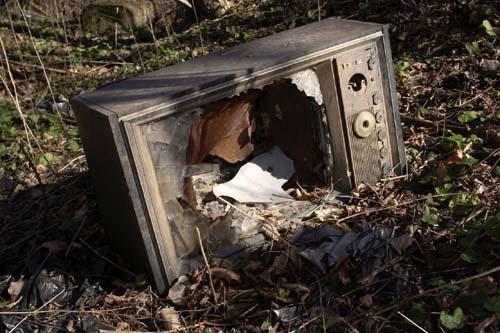Like it or not, the future of television broadcasting is digital – and that could lead to a “tsunami” of electronic waste that could pose an imminent danger, a state lawmaker warned last week.
By order of the Federal Communications Commission, all full-power television stations will turn off their standard analog signals on Feb. 17 and begin broadcasting only digital signals.
That could mean superior picture quality, as experts predict.
But without a newer TV (manufactured after March 1, 2007), a subscription to cable television, or a converter box, those with older sets will not be able to watch them.
That prospect does not sit well with Assemblymember William Colton, the chair of the Legislative Commission on Solid Waste Management.
“About forty-percent of heavy metals containing lead, cadmium, and mercury, come from the dumping of electronics in landfills. This poses a serious and growing threat to our groundwater, and if these units are incinerated, an even more serious threat to air quality,” Colton said in a letter to Governor David Paterson.
According to the Electronics Take Back Coalition, monitors and televisions contain approximately four to eight pounds of lead, he noted. “My constituents have not only questioned what state or city entity will be responsible for collecting the televisions, but also have questioned whether or not these televisions will be recycled and/or disposed of in a manner that will not harm the environment.”
At press time, Colton said the governor acknowledged receipt of the letter, and planned to forward it to “the appropriate agencies.”
And the threat could be global, Colton said.
American electronics are often shipped over seas to third-world or industrializing economies such as Ghana, India, and China, where the waste most often falls into the hands of “unlicensed or ill-equipped men, women, and children, that dismantle the units for their precious metals by burning them,” Colton said. “So, we are not just contaminating our rivers, streams, soil and air, we are contributing to the spread of world-wide toxic pollution,” he continued.
Colton suggested a tax on the manufacturers, holding them responsible for materials going into their products; and that resources be allocated to the Environment Protection Fund, “for the imminent onslaught that municipalities will be faced with in dealing with electronic waste.”
There is precedent for the former suggestion. In 2007, Minnesota passed legislation making manufacturers responsibility and product stewardship a recognized policy within the state. The state recycled 33.6 million pounds of electronic waste that year, and collected $607,840 from manufacturer registration fees and penalties, the state lawmaker noted.
“If we can tax soda based on the claim that it is increasing childhood obesity, than we can tax manufacturers for their production of harmful metals in electronics, which if leeched into the air or water can cause developmental problems in children if they are exposed,” Colton said, referring to an item in Paterson’s fiscal belt-tightening plan. Taken into this context, the exposure to lead and mercury is much more detrimental to a child’s health than exposure to sugar.”























